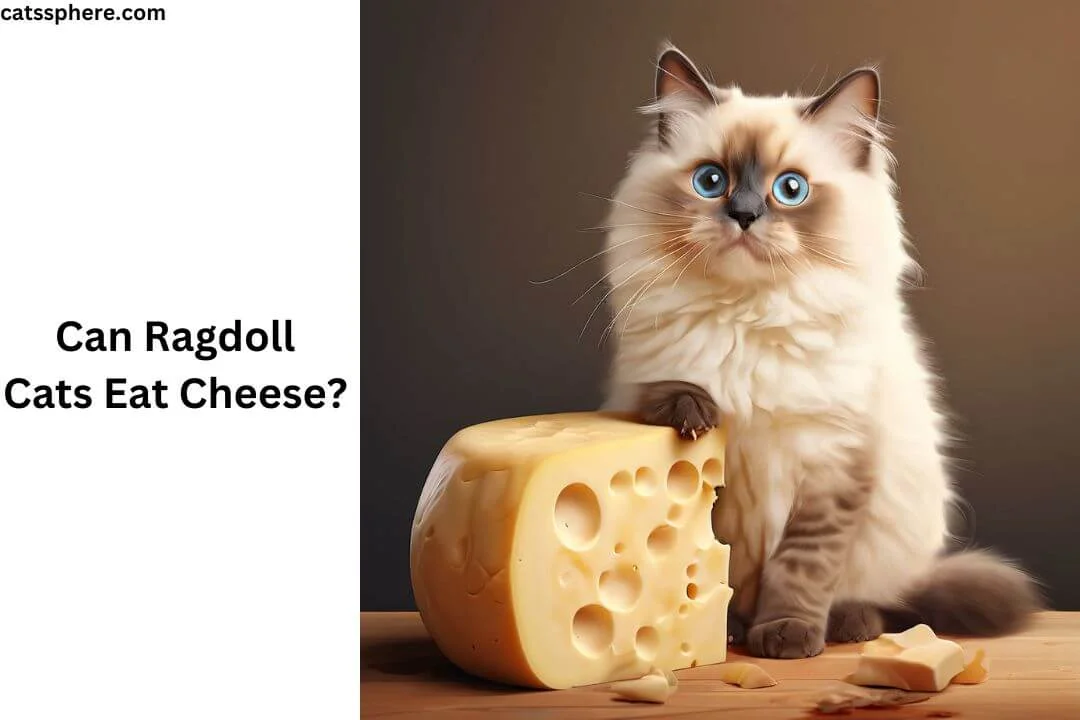Introduction
Understanding what our pets can and cannot eat is crucial for their health and happiness. As a cat owner, you want to ensure your furry friend gets the best nutrition possible. Today, we’re focusing on Ragdoll cats and whether cheese is a suitable treat for them. This article will dive into the dietary needs Can Ragdoll Cats Eat Cheese?, the potential benefits and risks of feeding them cheese, and provide alternative treats to keep your feline friend healthy and satisfied.
Understanding Ragdoll Cats
History and Origin
Ragdoll cats are a relatively new breed, developed in the 1960s by a breeder named Ann Baker in California. Known for their striking blue eyes and semi-longhaired coats, Ragdolls are large, affectionate, and often described as “puppy-like” because they tend to follow their owners around and enjoy physical contact.
Physical Characteristics
Ragdolls are one of the largest domesticated cat breeds, with males typically weighing between 15-20 pounds and females between 10-15 pounds. They have a muscular build, soft, silky fur, and their distinctive color patterns usually include a lighter body with darker points on the ears, face, paws, and tail.
Temperament and Behavior

Ragdolls are known for their calm and friendly demeanor. They are social, gentle, and adapt well to various environments, making them excellent companions for families and individuals alike. Their easy-going nature makes them less stressed by changes in their diet, but it’s still essential to introduce new foods carefully.
Dietary Needs of Ragdoll Cats
General Nutritional Requirements
Like all cats, Ragdolls are obligate carnivores, meaning they require a diet high in animal protein. Essential nutrients for Ragdoll cats include taurine, arachidonic acid, and vitamins such as A, D, and certain B vitamins, which are naturally found in animal tissues.
Importance of a Balanced Diet
A balanced diet ensures your Ragdoll cat gets all the necessary nutrients to support their health, growth, and energy levels. High-quality commercial cat foods are usually formulated to meet these needs, but some owners also supplement with fresh foods.
Common Foods for Ragdoll Cats
Ragdoll cats typically eat a combination of dry kibble and wet food. It’s important to choose cat food that lists meat as the primary ingredient and is free from excessive fillers like corn and soy. Occasionally, owners may offer cooked meats or fish as treats.
Cheese and Cats: An Overview
Nutritional Composition of Cheese
Cheese is a dairy product made from milk and comes in various types and flavors. It is rich in fat and protein and contains vitamins and minerals such as calcium, vitamin A, and B12.
Common Types of Cheese
Common types of cheese include cheddar, mozzarella, Swiss, and blue cheese. Each type has a different nutritional profile and flavor, but they all share similar base ingredients.
Why Cats Are Attracted to Cheese
Cats may be attracted to cheese due to its high fat and protein content, as well as its strong aroma. However, just because they find it appealing doesn’t mean it’s good for them.
Can Ragdoll Cats Eat Cheese?
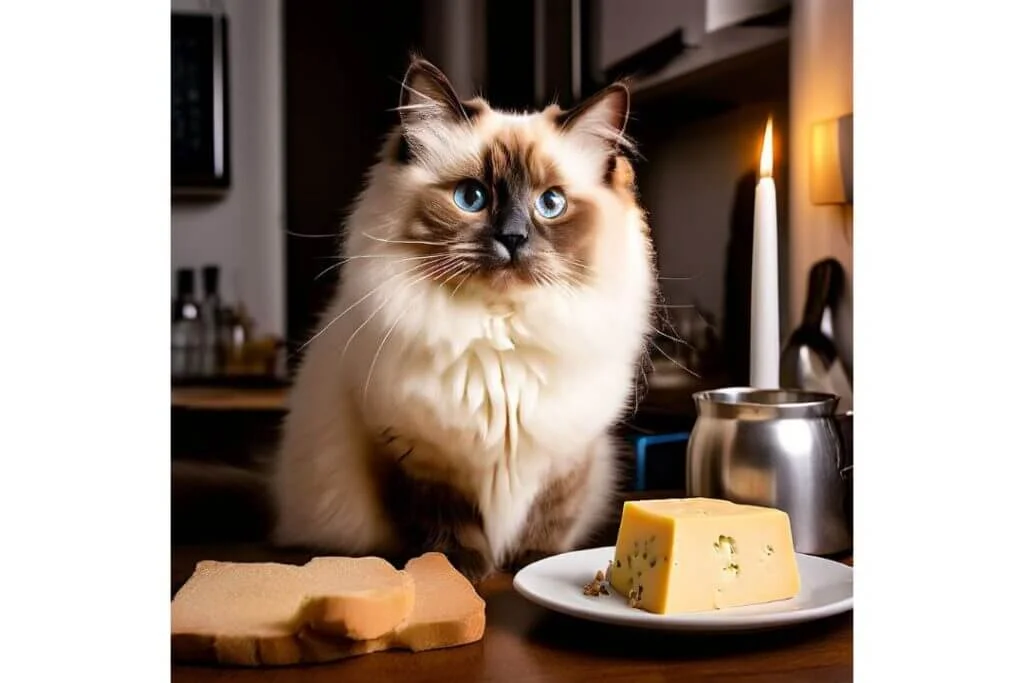
Lactose Intolerance in Cats
Most adult cats, including Ragdolls, are lactose intolerant. This means they lack the enzyme lactase, which is necessary to digest lactose, the sugar found in milk and dairy products. Consuming lactose can lead to digestive issues.
Effects of Cheese on Ragdoll Cats
Feeding cheese to a lactose-intolerant cat can cause symptoms like diarrhea, vomiting, and abdominal pain. Even if your cat doesn’t show immediate signs of distress, cheese is high in fat and salt, which can lead to other health problems.
Health Risks of Feeding Cheese to Ragdoll Cats
The primary risks of feeding cheese to Ragdoll cats include digestive upset, obesity due to high fat content, and potential long-term health issues like pancreatitis. It’s generally best to avoid cheese as a regular part of their diet.
Male vs. Female Ragdoll Cats: A Comprehensive Guide In 2024
Do Ragdoll Cats Have Blue Eyes? Detailed Guide In 2024
Shaving a Ragdoll Cat: A Comprehensive Guide In 2024
25 Bad Things About Ragdoll Cats
Benefits of Cheese for Cats
Potential Nutritional Benefits
While cheese can offer some nutritional benefits, such as protein and calcium, these can be obtained from other, more suitable sources that are easier for cats to digest.
Small Amounts as Treats
If you decide to give your Ragdoll cat cheese, it should be in very small amounts and only occasionally. A tiny piece of cheese as an infrequent treat is less likely to cause harm.
Choosing the Right Type of Cheese
If you do opt to give your cat cheese, choose a low-lactose variety like hard cheeses (e.g., cheddar or Swiss) over soft cheeses, which contain more lactose.
Risks of Feeding Cheese to Ragdoll Cats
Digestive Issues
The most immediate risk of feeding cheese to Ragdoll cats is digestive upset. Symptoms like diarrhea and vomiting can occur if a lactose-intolerant cat consumes cheese.
Obesity and Weight Management
Cheese is calorie-dense and high in fat, which can contribute to weight gain if fed regularly. Obesity in cats can lead to a host of health issues, including diabetes and joint problems.
Long-term Health Concerns
Feeding cheese regularly can lead to chronic health issues such as pancreatitis, which is inflammation of the pancreas and can be very serious.
Alternative Treats for Ragdoll Cats
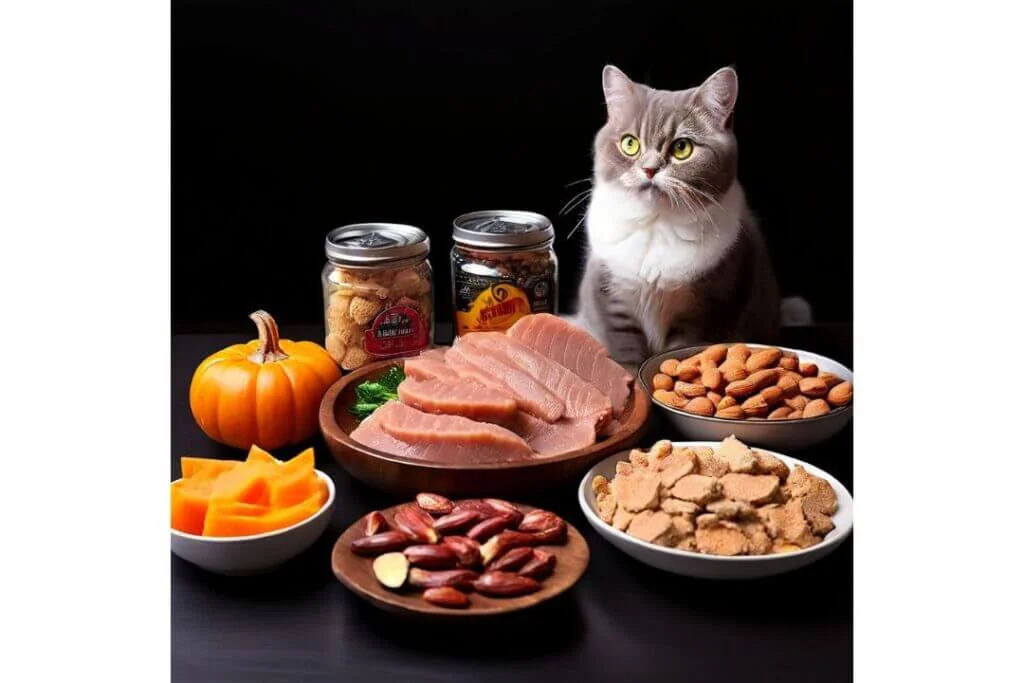
Healthy Snacks
Instead of cheese, offer healthy snacks like small pieces of cooked chicken, turkey, or fish. These are high in protein and align with their dietary needs.
Homemade Cat Treats
Homemade treats can be a great option. Recipes might include ingredients like canned tuna, cooked pumpkin, or small amounts of catnip.
Commercial Cat Treats
There are many commercial cat treats available that are formulated to be safe and nutritious for cats. Look for treats that are high in protein and low in artificial additives.
Signs of Lactose Intolerance in Cats
Symptoms to Watch For
Signs of lactose intolerance in cats include diarrhea, vomiting, bloating, and gas. If your cat exhibits these symptoms after consuming dairy, it’s best to avoid these foods in the future.
Immediate and Delayed Reactions
Symptoms of lactose intolerance can appear immediately after eating dairy or can be delayed for several hours. It’s important to monitor your cat after introducing any new food.
When to See a Veterinarian
If your cat shows severe symptoms or doesn’t recover quickly, it’s crucial to seek veterinary advice. Persistent digestive issues can lead to dehydration and other health problems.
How to Safely Introduce New Foods to Your Ragdoll Cat
Gradual Introduction Process
When introducing new foods, do so gradually. Start with a very small amount and observe your cat for any adverse reactions over the next 24-48 hours.
Monitoring for Adverse Reactions
Watch for signs of digestive upset or allergic reactions. If your cat seems fine after the initial introduction, you can gradually increase the amount.
Consulting with a Veterinarian
Always consult your veterinarian before making significant changes to your cat’s diet or introducing new foods. They can provide personalized advice based on your cat’s health history.
What to Do if Your Ragdoll Cat Eats Cheese
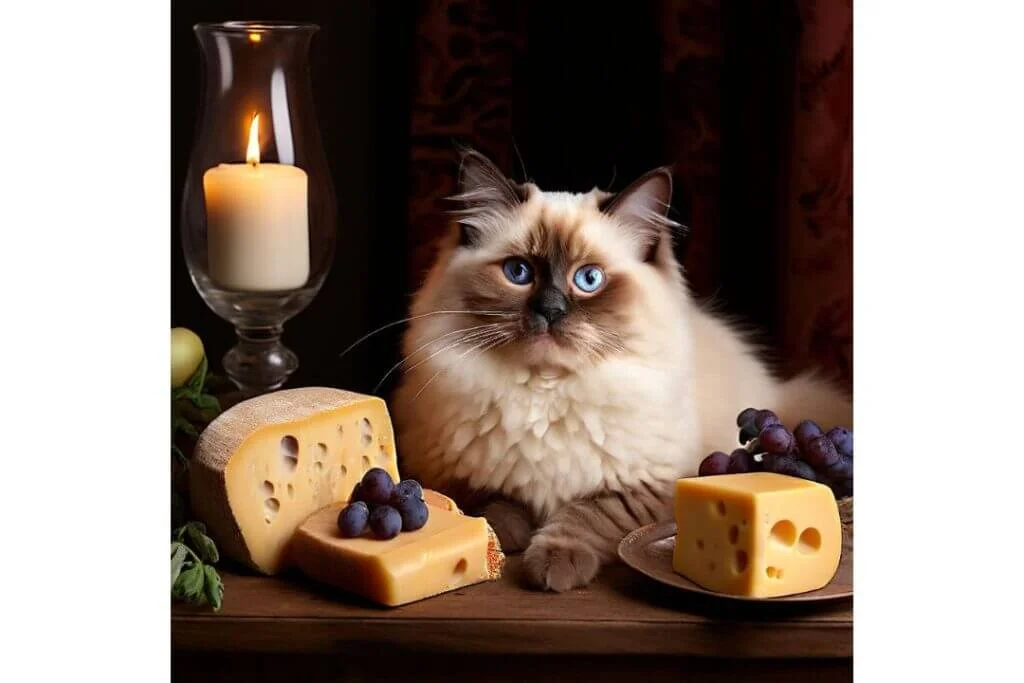
Immediate Steps to Take
If your cat eats cheese, monitor them closely for any signs of digestive distress. Ensure they have access to plenty of fresh water.
Monitoring Your Cat’s Health
Watch for symptoms like vomiting, diarrhea, or lethargy. If these occur, contact your veterinarian for advice.
When to Seek Veterinary Help
If your cat exhibits severe or prolonged symptoms, seek veterinary assistance immediately. It’s better to err on the side of caution when it comes to your pet’s health.
Homemade Cat-Friendly Cheese Alternatives
Simple Recipes
There are recipes for cat-friendly treats that mimic cheese without the lactose. These can include ingredients like pureed pumpkin, fish, and meat.
Ingredients to Use and Avoid
Use high-protein, low-fat ingredients that are safe for cats. Avoid onions, garlic, and high-sodium ingredients.
Portion Control
Even healthy treats should be given in moderation. Overfeeding can lead to obesity and other health issues.
Commercial Cat Treats with Dairy
Overview of Available Products
Some commercial cat treats include dairy in a form that is safe for cats. These are often made with lactose-free milk or dairy derivatives.
Reading Ingredient Labels
Always read ingredient labels to ensure there are no harmful additives. Look for treats that are specifically formulated for cats.
Recommendations and Reviews
Consult reviews and ask your veterinarian for recommendations on safe and nutritious treats for your cat.
Tips for Maintaining a Healthy Diet for Your Ragdoll Cat
Regular Feeding Schedule
Maintain a regular feeding schedule to help manage your cat’s weight and overall health. Consistency is key.
Balanced Nutrition
Ensure your cat’s diet is balanced and includes all necessary nutrients. High-quality commercial cat food often meets these requirements.
Importance of Fresh Water
Always provide fresh water for your cat. Proper hydration is essential for their health and digestion.
Conclusion
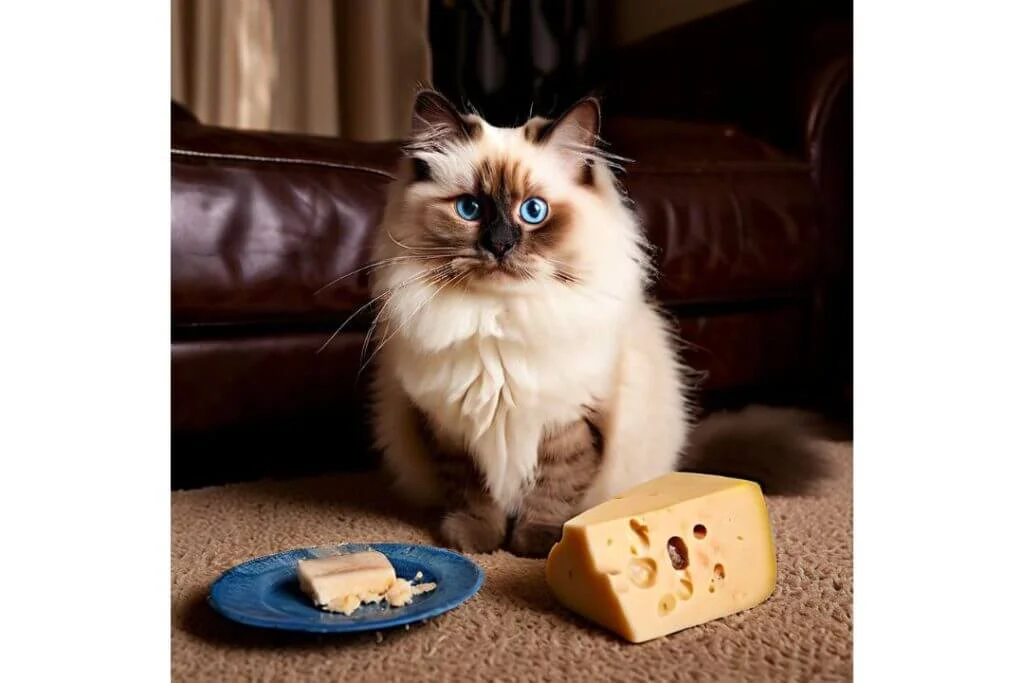
In summary, while cheese might seem like a tempting treat for your Ragdoll cat, it’s generally best to avoid it due to the potential health risks. Ragdolls, like most cats, are lactose intolerant and can suffer from digestive issues if they consume dairy. Instead, opt for healthier treats that align with their dietary needs. Always consult with your veterinarian before introducing new foods to your cat’s diet. Remember, a balanced diet and proper nutrition are key to keeping your Ragdoll happy and healthy.
FAQs
Can Ragdoll Cats Eat Dairy Products Other Than Cheese?
Most adult cats are lactose intolerant, so it’s best to avoid all dairy products, including milk and yogurt.
How Often Should I Give My Ragdoll Cat Treats?
Treats should be given sparingly, making up no more than 10% of your cat’s daily caloric intake.
Are There Any Safe Human Foods for Ragdoll Cats?
Yes, small amounts of cooked meat, fish, and certain vegetables can be safe. Always avoid foods toxic to cats like onions, garlic, and chocolate.
What Are the Signs of a Healthy Diet in Ragdoll Cats?
Signs include a shiny coat, healthy weight, good energy levels, and normal digestion.
How Can I Ensure My Ragdoll Cat is Getting Enough Nutrients?
Feed them high-quality commercial cat food that is formulated to meet all their nutritional needs and consult with your veterinarian for dietary advice.

